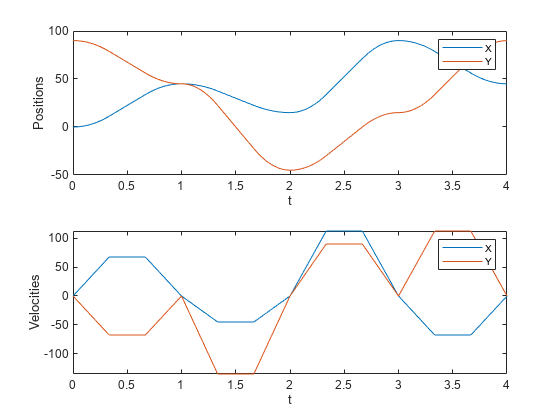trapveltraj
Generate trajectories with trapezoidal velocity profiles
Syntax
Description
[
generates a trajectory through a given set of input waypoints that follow a trapezoidal
velocity profile. The function outputs positions, velocities, and accelerations at the given
time samples, q,qd,qdd,tSamples,pp] = trapveltraj(wayPoints,numSamples)tSamples, based on the specified number of samples,
numSamples. The function also returns the piecewise polynomial
pp form of the polynomial trajectory with respect to time.
[
specifies additional parameters using q,qd,qdd,tSamples,pp] = trapveltraj(wayPoints,numSamples,Name,Value)Name,Value pair arguments.
Examples
Input Arguments
Name-Value Arguments
Output Arguments
References
[1] Lynch, Kevin M., and Frank C. Park. Modern Robotics: Mechanics, Planning and Control. Cambridge: Cambridge University Press, 2017.
[2] Spong, Mark W., Seth Hutchinson, and M. Vidyasagar. Robot Modeling and Control. John Wiley & Sons, 2006.
Extended Capabilities
Version History
Introduced in R2019a

